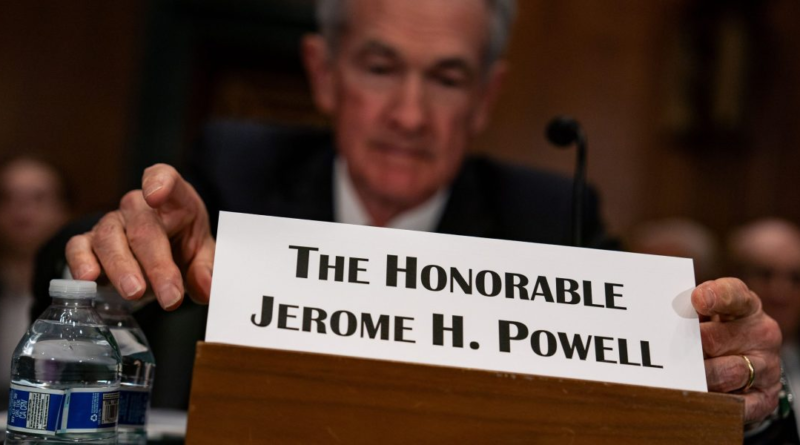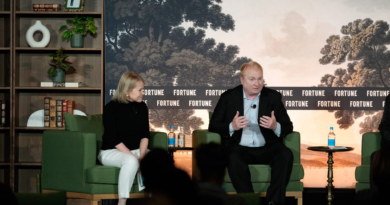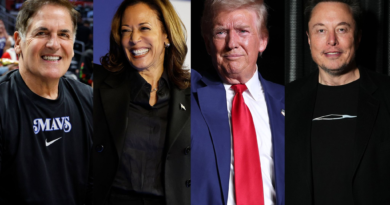FOMO-driven buyers could jump at Nvidia’s ‘three day AI lovefest’—but Fed Chair Powell is ready to play the spoiler, Ed Yardeni says
The rise of AI has left many investors—or maybe we should call them speculators—desperately searching for tech stocks that will allow them to share in Wall Street’s modern-day gold rush. It’s a fear of missing out dynamic that typically coincides with market bubbles, although the debate over whether we’re currently in a bubble is still underway. Now, Nvidia’s giant AI conference, GTC 2024, could add fuel to the FOMO fire this week, drawing in even more money to AI-linked stocks, according to Ed Yardeni of Yardeni Research.
“We could see a scenario in which FOMO buyers jump into Nvidia and other tech stocks during Nvidia CEO Jensen Huang’s talk from 4-6 pm EST on Monday,” the veteran economist and Wall Street strategist wrote in a Sunday note to clients, calling the conference “Nvidia’s three-day AI lovefest for developers.”
But investors hoping for another AI-induced stock market rally should be cautious. The Federal Reserve Open Market Committee (FOMC) meets Tuesday and Wednesday to discuss monetary policy—and Chair Jerome Powell could throw cold water on stocks’ rally in his follow up press conference.
“Bearish traders might take the market down Tuesday afternoon,” Yardeni warned, adding that fear could spread if the Fed chair indicates a “more hawkish” outlook.
For roughly two years now, Fed officials have been attempting to tame inflation using interest rate hikes as their main weapon. The tactic has increased borrowing costs for businesses and consumers nationwide, but it’s also been pretty effective, reducing the annual rate of inflation from its June 2022 9.1% high to just 3.2% in February. Powell said earlier this month in his semiannual monetary policy report to Congress that the drop in inflation has given him confidence that he’ll “likely” be able to cut rates at some point this year.
But Yardeni noted that Powell and company won’t like what they saw in February’s consumer or producer price inflation reports. Both reports surprised economists, coming in hotter than expected and signaling the slow decline of inflation has now largely subsided.
Yardeni said that he believes this new evidence will lead Powell to be more hawkish this week. He even argued that the Fed’s Summary of Economic Projects (SEP), a baseline estimate of Fed officials’ economic forecasts, will likely show Fed members now expect inflation to moderate at a “slower pace” and are forecasting just two, rather than three, rate cuts this year.
With higher-than-forecast interest rates set to weigh on corporate earnings, Yardeni warned that markets could be in for some near-term pain—despite the AI FOMO that will be boosted by Nvidia’s event. “[Investors and traders] might keep selling if Powell dials back his talk about dialing back restriction,” he warned.
Yardeni noted that markets have already spent the past few weeks adjusting to the prospect of fewer interest rate cuts. To his point, both the 10-year and 2-year Treasury yields have surged roughly 6% since March 8, to 4.34% and 4.74%, respectively. And the iShares 20+ Year Treasury Bond ETF, which tracks Treasuries with a maturity of over 20 years, has now dropped for a record eight straight days, a sign that investors are pricing in fewer rate cuts—and thus, rising Treasury yields.
Despite the new outlook from investors for fewer rate cuts, major market indices are still in “overbought” territory, according to Yardeni, leaving them vulnerable to a correction. “If the Fed remains in pause mode longer than expected, the stock market rally may be due for a pause as well,” he argued.
To back up his view that investors should be cautious, Yardeni featured comments from Michael Brush, a MarketWatch columnist and the publisher of the newsletter Brush Up on Stocks, who noted that insider sales trends aren’t looking great.
“Insider buying continues to remain remarkably light relative to selling, indicating a cautious view of the stock market among corporate executives and directors,” Brush said. “Even the buying we had seen in biotech and regional banks has dried up.”



